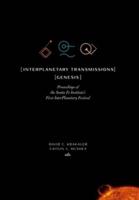Publisher's Synopsis
This report contains results of flight tests for three path update algorithms designed to provide smooth transition for an aircraft guidance system from DME, VORTAC, and barometric navaids to the more precise MLS by modifying the desired 3-D flight path. The first algorithm, called Zero Cross Track, eliminates the discontinuity in cross-track and altitude error at transition by designating the first valid MLS aircraft position as the desired first waypoint, while retaining all subsequent waypoints. The discontinuity in track angle is left unaltered. The second, called Tangent Path, also eliminates the discontinuity in cross-track and altitude errors and chooses a new desired heading to be tangent to the next oncoming circular arc turn. The third, called Continued Track, eliminates the discontinuity in cross-track, altitude, and track angle errors by accepting the current MLS position and track angle as the desired ones and recomputes the location of the next waypoint. The flight tests were conducted on the Transportation Systems Research Vehicle, a small twin-jet transport aircraft modified for research under the Advanced Transport Operating Systems program at Langley Research Center. The flight tests showed that the algorithms provided a smooth transition to MLS. Hueschen, Richard M. Langley Research Center NASA-TM-4089, L-16458, NAS 1.15:4089 RTOP 505-66-41-04...












